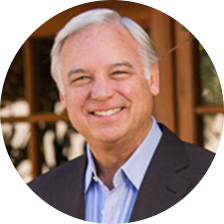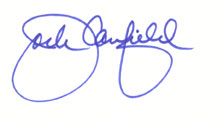If you want to become a successful thought leader, author, speaker, or simply share your message with the world, you must understand how to lead a successful training workshop.
I am going to share with you my very own process – what we call The Canfield Training Methodology for leading amazing, transformational workshops.
These are the exact workshop plans that I use every time I speak, whether it is for an hour or a weeklong training seminar.
First, I want you to think like you were building a house…
When you build a house, you have to start with a blueprint. You don’t just keep your vision of what you are going to build in your head right? If you have ever built a house, you know that would be an expensive mistake. You think about all the details, the size, the number of rooms, the layout, the overall feel you want to create and so on.
You need to do this same thing when you are designing the content for your workshop.
8 Tips to Engage Every Aspect of Yourself
Start by determining what is the desired outcome you want for your attendees:
- Is it to help them find their true purpose?
- Improve their business?
- Increase their income?
- Learn a new skill?
- Develop a new habit?
Determining the purpose will then help you determine who should attend, how many, and at what kind of location. And of course, it is important to know who your audience is so that you have relevant examples and stories they can relate to.
For example, if you are speaking to a women’s group, your leadership style needs to be crafted for the audience, you probably don’t want to only use a bunch of sports analogies.
In my work, I use a pre-program questionnaire that is filled out by the workshop planner or the individual attendees, so I am clear on what outcome we are looking to create once the training is over.
Workshop Plans for Leading a Training
I’d like to share my workshop plans and ideas I use that provides me with the structure I need to stay on track and cover all of the key ingredients I have discovered that make a presentation clear, engaging, and memorable for your audience.
1. Engage the Audience
First, start by engaging the audience – Clarify your purpose and your goals for the seminar or talk.
What is the central purpose of your event or presentation? What do you want people to go away from the seminar knowing, experiencing, being or doing?
2. Set the Tone for the Day
Then set the tone for the day: Why this message is important to you – what I refer to is your WHY. What makes you so passionate about the what you are sharing with them. Tell them the story about how you became so committed to sharing this subject.
The more open and transparent you are with the audience, the more connected and safe they will feel with you.
3. Tell a Funny Story
Tell a funny story, add cartoons into your presentation, or show a funny video.
No matter how serious your topic is, using humor is the best way to connect with your audience and get everyone relaxed.
4. Have an Icebreaker Activity
Next, I introduce an icebreaker activity, which is specifically designed to create a safe space and give you and the group a chance to bond quickly and efficiently.
It could be as short as a 90-second exercise, a short 5 to 10-minute game, or an hour filled with several short exercises done in a specific order to create a specific effect.
You can introduce an exercise to complete in small groups or simply have everyone stand up and walk around the room and share two things they are grateful for or why they chose to attend your presentation. Use your imagination and always demonstrate what you are asking them to do before you have them do it.
For example, if you are asking them to share a recent success they have had or to share one thing they hope to take away from the presentation today, tell them how you would answer that question before you have them do it. And again, be totally honest and transparent so the group gets to see you are human too! This builds huge levels of trust.
5. Introduce Your Concept
Now it’s time to give them what they came for. Introduce a concept or principle that will deliver on your promise to them and why it is important.
In my case, I typically start with the first principle in my book The Success Principles, which is Take 100% Responsibility for your Life and Your Results. This is the fundamental principle that everything else I teach stems from.
6. Share Research
After introducing the concept, create credibility by sharing any research, statistics and case studies that validate what you are teaching them.
7. Share a Story
Then drive your message home with a story to illustrate the concept. Stories are a great way to velcro your message or the concept you are teaching their long-term memory and stories keep your audience engaged. Everyone loves a good story. And it’s even better if it’s a story from your own life. That’s not always possible, but personal stories have the deepest impact.
8. Follow Up With an Interactive Exercise
In order to appeal to all types of learners, I typically follow up with an interactive exercise or demonstration to drive the point home even deeper. I like to ask for a volunteer and invite them to come up on stage with me and do a demonstration for the whole group, which works best for shorter presentations and workshops.
Or I might have them fill out a worksheet and then get into groups and share their answers with each other while I walk around and help them. With some groups, I have them do a total group activity, like a meditation or a guided visualization.
Use Visual Aids When You Can
There are basically 3 types of learners – auditory, visual and kinesthetic. If you follow the formula we have been discussing plus some powerpoint or keynote slides, you will have accommodated all 3 types.
9. Debriefing Session
At the end of a workshop or shorter presentation, I like to rap it up with a debriefing session. You can do this by putting people in pairs, in a small group of three to six, or have a few people share their aha’s and awarenesses in front of the whole group. This also gives the participants the opportunity to ask questions if they are feeling stuck. If one person has a question, there’s almost always someone else who has that same question.
While you’re doing this, honor and celebrate the level of trust that has been established so far. It’s best to be impartial to their feedback in this part of the session. Don’t necessarily evaluate their ideas or contribute more, but definitely encourage their input.
10. Commit to Action
One more step: When everything has been reviewed, get everyone to commit to one action step they can take to get them closer to their goal – based on what they’ve just learned – and have them write it down!
Lastly and very important – Make sure that you have a clear transition when you are moving from one concept or principle to another one.
11. Repeat for Your Next Concept
Once you have introduced your next principle or topic all you need to do is repeat the same steps again.
12. Leave Them Motivated
When you’ve reached the end of the training workshop, whether it is one hour or a full day have a final closure exercise and wrap it up with a powerful story that will have them leaving motivated and inspired, ready to go from where they started to where they want to be!
That’s how you think like a trainer and lead a compelling and engaging training seminar!
8 Tips to Engage Every Aspect of Yourself


